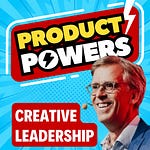When was the last time you showed up at work as your true, authentic self? Not the polished, corporate version, but the version that is, well quite simply, you?
I had the pleasure of speaking with Stuart Young—a visual thinking expert, facilitator, and coach—about authenticity at work and why it’s crucial for effective facilitation. We explored how being your genuine self can help build stronger human connections, enable collaboration, and ultimately lead to better results in the workplace. Here’s a summary of our conversation.
Authenticity: The Foundation of Connection
Stuart believes that authenticity is a superpower, especially in roles where human connection is key—like facilitation. He emphasized that showing up as your true self, quirks and all, allows you to build trust and create psychological safety. This is particularly important when leading groups through challenging discussions, creative problem-solving, or conflict resolution.
"We've all faced adversity, excitement, and challenges. These experiences shape who we are and make us relatable. When you bring that into the room, you enable others to do the same."
But how does authenticity translate into practical facilitation techniques? Stuart offered some powerful insights.
Facilitation Tip #1: Create Psychological Safety
Facilitators often aim to help groups transition from alignment to divergent thinking before converging on solutions. Stuart highlighted the importance of creating a safe space for this process.
"Humor is my go-to, and self-deprecating humor, in particular, helps to break down barriers and lets people know it’s okay to be imperfect."
By setting a tone of warmth and acceptance, facilitators can encourage participants to take risks and share ideas freely.
The key takeaway? Before diving into frameworks and sticky notes, focus on building a foundation of trust.
Facilitation Tip #2: Leverage Visual Thinking
Visual thinking isn’t about drawing pretty pictures; it’s about making ideas tangible, aligning perspectives, and fostering collaboration. Stuart emphasized that visual tools—like diagrams, sketches, and mind maps—help teams generate ideas, solve problems, and build alignment.
"Visual thinking taps into our innate visual literacy. We learned to interpret pictures before we could read words. Using visuals helps us process information faster and more effectively."
Whether it’s a quick sketch on a whiteboard or an interactive Miro board, visuals invite participation and make abstract concepts concrete.
Facilitation Tip #3: Embrace Inclusivity
Inclusion isn’t just about ensuring everyone has a voice—it’s about creating opportunities for people to contribute in ways that feel natural to them. Stuart’s background in social care taught him the value of accessibility and diverse forms of communication.
He described a simple but powerful activity called the "Low-Tech Social Network," where participants write their names and goals on index cards, then connect them with string.
"It’s a great way to visualize connections and make invisible relationships visible,"
For virtual settings, Stuart recommended using collaborative tools like Miro or Lucid to create digital spaces where introverts and extroverts alike can engage comfortably.
Visual Thinking: Future-Proofing Against AI
In an age dominated by artificial intelligence, human skills like creativity, storytelling, and visual thinking are more important than ever. Stuart argued that while AI can generate outputs, it lacks the human ability to process emotions, interpret contexts, and build relationships.
"Visual thinking isn’t just about output—it’s about process, and that process is deeply human. It’s how we generate ideas, make connections, and build alignment."
As organizations increasingly prioritize innovation and adaptability, these skills will only become more valuable.
Final Thoughts: Abolishing Bureaucratic Barriers
To wrap up the episode, I asked Stuart a thought-provoking question: If he had a superpower to abolish anything in the workplace for 24 hours, what would it be?
His answer? Bureaucracy.
Stuart envisioned a workplace where spontaneous conversations and creative collisions could happen virtually—no formal scheduling required. Imagine a virtual water cooler where ideas flow freely, without the constraints of calendar invites.
"Creativity thrives in informal spaces, we need to find ways to recreate those moments, even in a hybrid world."
The Takeaway: Be Real, Be Effective
Whether you’re leading a brainstorming session, aligning stakeholders, or navigating team dynamics, showing up as your true self can make all the difference.
Guest: Stuart Young
As a professional trainer, consultant and visual practitioner, I specialise in Agile, Product, Visual Facilitation and Emotional intelligence, offering a range of certified and non-certified training programs complemented by Visual Storytelling services.
My mission is to inspire growth, foster resilience, and empower teams to navigate complexity with confidence, enabling individuals to connect, communicate, and collaborate more effectively.
Check out Stuart Young’s work at stuartyoung.uk or connect with him on LinkedIn.













